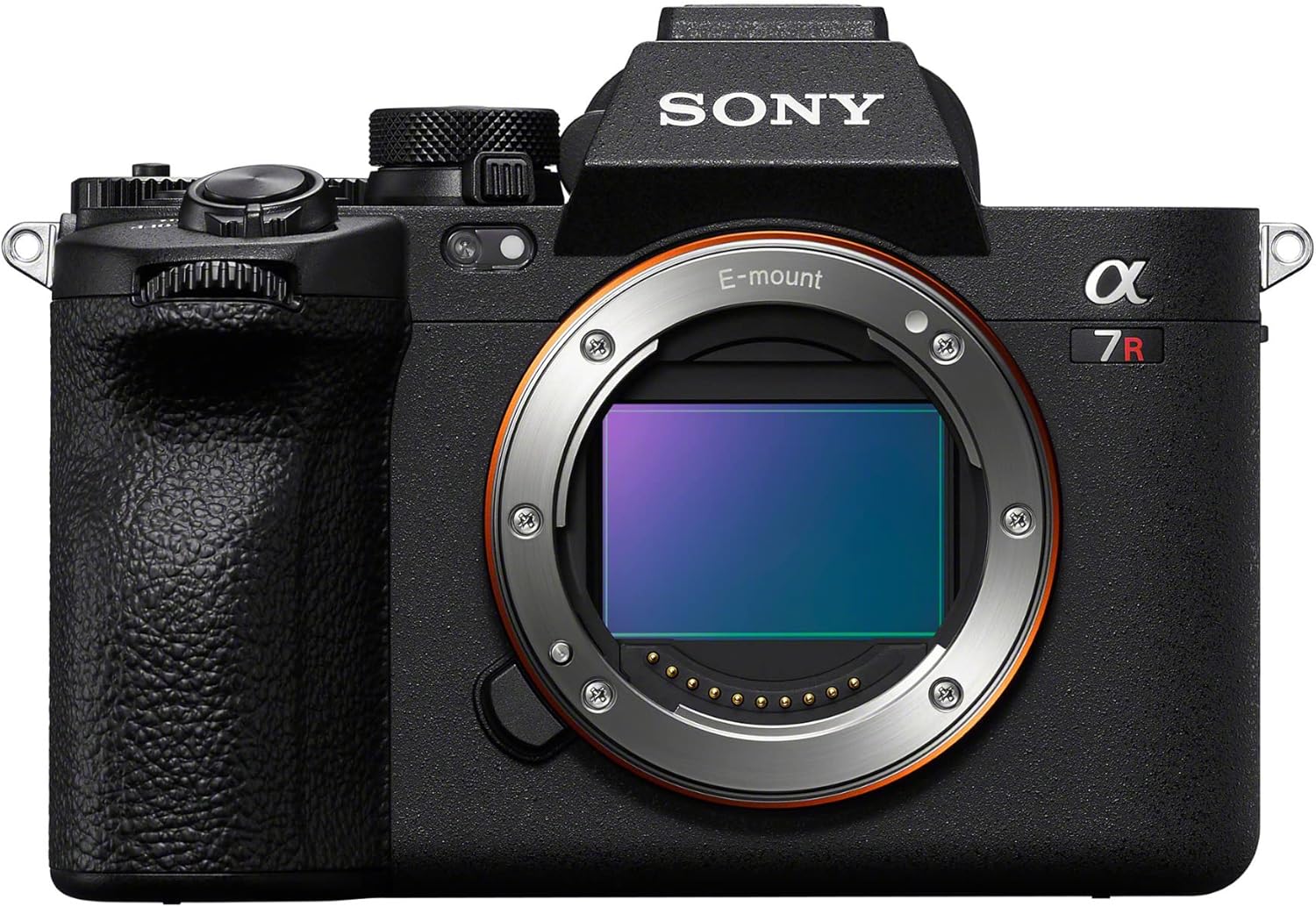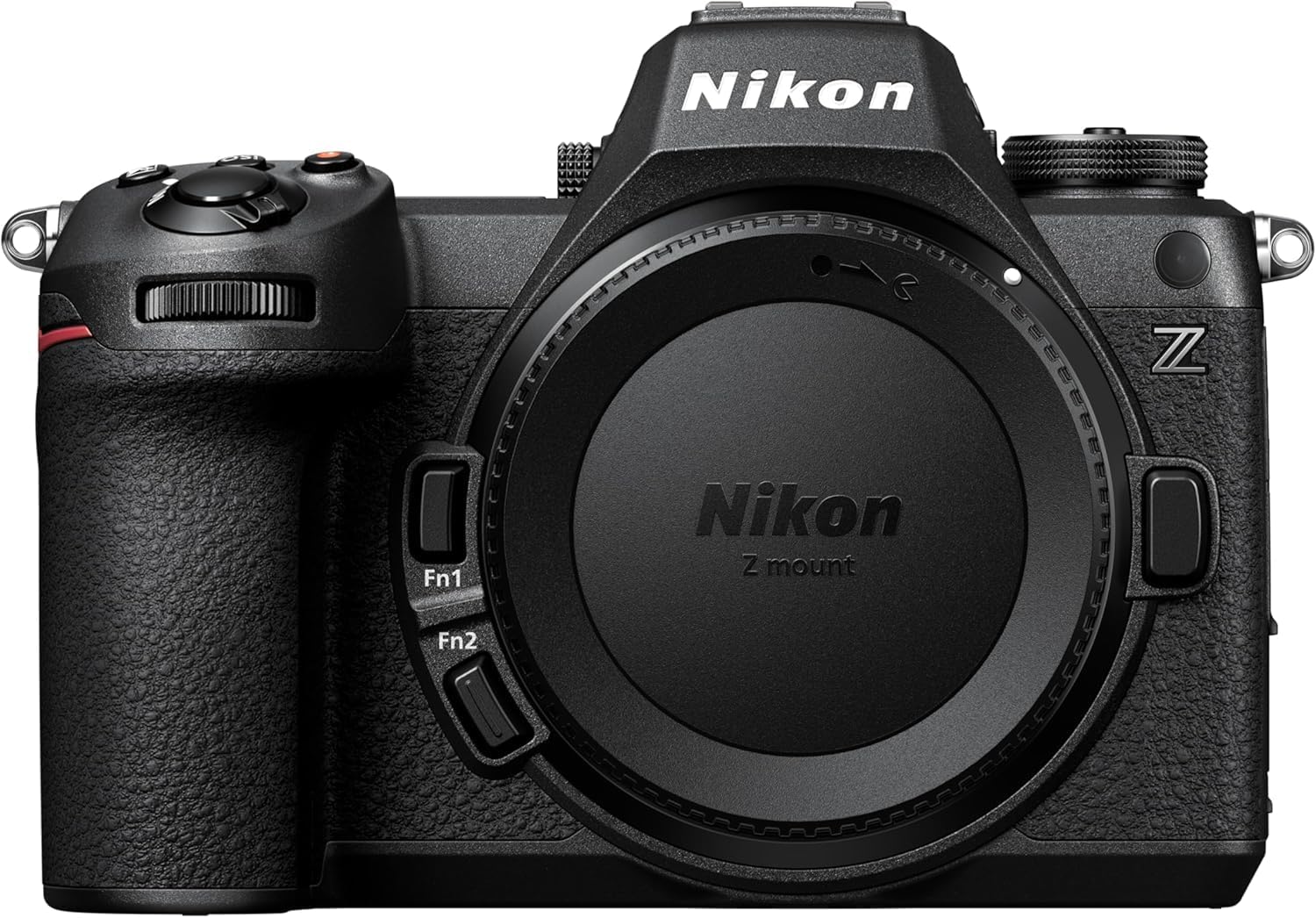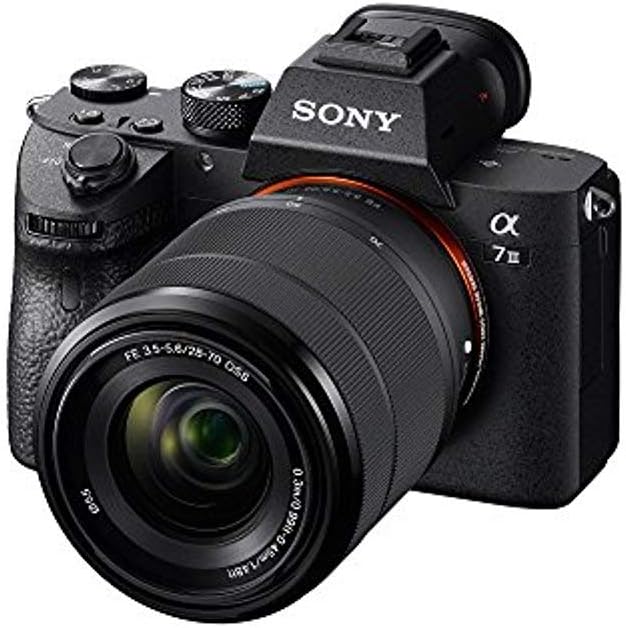Have you ever gazed up at the Milky Way stretching across the night sky and wished you could capture its epic scale? For photographers across the United States, 2025 is the year to turn that wish into a reality. The latest generation of mirrorless cameras has democratized the art of astrophotography, packing incredible low-light performance and intelligent features into bodies that are easier to use than ever before. Whether you’re a complete beginner eager to take your first long exposure or a seasoned pro looking for an upgrade, finding the best camera for astrophotography is the critical first step. This guide is here to break down the top contenders, so you can stop dreaming and start creating jaw-dropping images of the moon, stars, and distant galaxies.
Table of Contents
- 1. Sony Alpha 7R V Full-Frame Mirrorless Camera
- 2. Nikon Z6III 24.5MP Full-Frame Mirrorless Camera
- 3. Sony a7 III Full-Frame Mirrorless Camera
- 4. Canon EOS R8 Full-Frame Mirrorless Camera
- 5. Nikon Zf Full-Frame Mirrorless Camera
- Astrophotography Camera Buying Guide
- Frequently Asked Questions (FAQ)
- Final Thoughts
🥇 1. Sony Alpha 7R V Full-Frame Mirrorless Camera
The ultimate choice for detail, resolution, and intelligent features.

At the pinnacle of our list sits the Sony Alpha 7R V, a camera that is, simply put, an imaging masterpiece. For the photographer who demands the highest level of detail and is unwilling to compromise, this is the best camera for astrophotography in 2025. It is built around a phenomenal 61.0MP full-frame back-illuminated sensor, which captures the cosmos with an astonishing level of detail. This resolution allows for massive prints and gives you the freedom to crop aggressively on distant galaxies while maintaining pristine image quality. Powering the camera is the BIONZ XR processor and a dedicated AI processing unit, which work together to optimize image quality and performance. While its AI-powered autofocus is revolutionary, its ergonomic design is what makes it a dream for astrophotographers. It features a class-leading 8-stop in-body image stabilization system and a uniquely brilliant 4-axis multi-angle LCD screen. This screen can tilt and flip out, offering unparalleled flexibility for composing shots when the camera is aimed at the sky. For its uncompromising resolution, intelligent features, and thoughtful design, the Sony a7R V is our top recommendation.
✅ Pros:
- Massive 61.0MP sensor resolves incredible detail, perfect for serious deep sky astrophotography.
- The highly versatile 4-axis multi-angle screen is a game-changer for ergonomic shooting.
- Industry-leading 8-stop stabilization provides maximum stability for composing shots.
- AI-powered processing enhances overall image accuracy and performance.
❌ Cons:
- The extremely large file sizes require ample, fast storage and a powerful computer for editing.
- As a flagship professional camera, it represents the highest investment on this list.
🥈 2. Nikon Z6III 24.5MP Full-Frame Mirrorless Camera
Best for photographers seeking cutting-edge sensor technology.

The Nikon Z6III is a testament to technological innovation and a true powerhouse for low-light imaging. It stands out as the best Nikon camera for astrophotography for enthusiasts who want the absolute latest in performance. The centerpiece is its revolutionary partially-stacked CMOS sensor, a world’s-first design that offers incredible readout speeds for exceptionally clean image quality across its wide native ISO range of 100-64,000. For astrophotographers, this means capturing the faintest celestial details with remarkable clarity and color fidelity. This mirrorless camera for astrophotography also features a flagship-level autofocus system that performs brilliantly in the dark, along with a bright, ultra-high-resolution electronic viewfinder that makes manual focusing on stars a joy. The Z6III is built tough for outdoor use and includes advanced video features like internal N-RAW recording, making it a fantastic hybrid tool for capturing both stills and breathtaking astro-timelapses. For the photographer who wants to be on the cutting edge of sensor technology to gain an advantage in challenging low-light conditions, the Nikon Z6III is a clear and compelling choice.
✅ Pros:
- Groundbreaking partially-stacked sensor delivers incredible speed and fantastic high-ISO performance.
- A superb, high-resolution EVF provides a clear and detailed view for easy composition and focusing.
- Excellent build quality and ergonomics designed for professional use in the field.
- Wide native ISO range offers tremendous flexibility for all types of astrophotography.
❌ Cons:
- Represents a significant investment, with features that may be more than a casual user requires.
- The advanced feature set may present a steeper learning curve for beginners.
🥉 3. Sony a7 III Full-Frame Mirrorless Interchangeable-Lens Camera
Best all-around performer and a proven workhorse for astrophotography.

The Sony a7 III is a legend in the photography world, and its reputation is well-earned. Even years after its release, it remains a top-tier choice and arguably the best Sony camera for astrophotography when balancing performance and value. It is a true do-it-all workhorse. The key to its success is the 24.2MP back-illuminated full-frame sensor, which provides incredible light-gathering ability and a massive 15-stop dynamic range. This is a huge advantage for deep sky astrophotography, allowing you to capture faint details in nebulae and galaxies and pull rich information from your RAW files during editing. The camera is also equipped with 5-axis in-body image stabilization, which is helpful for steadying the frame while you compose your shots. Its acclaimed Z-series battery offers fantastic longevity, a crucial feature that lets you shoot for hours without constantly worrying about power. With a reliable autofocus system that covers most of the frame, dual card slots for peace of mind, and a vast library of available lenses, the Sony a7 III is a proven, powerful, and pragmatic choice for any serious night sky photographer.
✅ Pros:
- The back-illuminated sensor is a top performer in low light, delivering clean images at high ISOs.
- Excellent battery life is perfect for all-night imaging sessions.
- Features a robust and reliable autofocus system and 5-axis image stabilization.
- Immense ecosystem of high-quality native and third-party lenses.
❌ Cons:
- The tilting rear screen is less flexible than the fully articulating screens on newer models.
- The menu system can be less intuitive to navigate compared to more recent camera interfaces.
🏅 4. Canon EOS R8 Full-Frame Mirrorless Camera
Best budget camera for astrophotography and an ideal choice for beginners.

If you believe you need to spend a fortune to get a great full frame camera for astrophotography, the Canon EOS R8 is here to prove you wrong. This camera is a game-changer, offering a powerful full-frame sensor in a body that is exceptionally lightweight and affordable. This makes it a perfect astrophotography camera for beginners who want to start with high-quality gear without a massive investment. The R8 is built around a 24.2 Megapixel CMOS sensor and Canon’s DIGIC X Image Processor, a duo that delivers fantastic image quality with low noise, even at high ISO settings. Its autofocus system is remarkably adept in the dark, functioning down to EV -6.5, which is a massive help for locking onto stars. Weighing only about a pound (461g), it’s an ideal companion for hiking to dark-sky sites, as it won’t weigh down your pack and puts minimal strain on your tripod or star tracker. For those looking for the best budget camera for astrophotography that doesn’t compromise on the all-important sensor size, the Canon EOS R8 is an easy recommendation and an incredible value.
✅ Pros:
- Offers the light-gathering benefits of a full-frame sensor at an exceptionally accessible price point.
- Incredibly lightweight and compact, making it the perfect travel companion for astro-adventures.
- The sensor and processor deliver clean, high-quality images ideal for night sky photography.
- Reliable low-light autofocus simplifies one of the trickiest parts of astrophotography.
❌ Cons:
- Lacks in-body image stabilization, relying instead on lens-based stabilization.
- The compact size means a smaller battery, so carrying spares for a full night of shooting is essential.
🎖️ 5. Nikon Zf Full-Frame Mirrorless Camera with 4K Video
Best for photographers who appreciate classic design and modern power.

The Nikon Zf is a stunning example of retro design infused with today’s most powerful imaging technology. While its classic look is a nod to Nikon’s film-era heritage, its performance makes it a serious contender as a modern astrophotography camera. Inside its magnesium alloy body lies a 24.5MP full-frame sensor, an ideal resolution for capturing clean, vibrant images of the night sky. This sensor is powered by the flagship EXPEED 7 image-processing engine, which does a remarkable job of controlling noise at the high ISO settings required for a great Milky Way photography camera. What truly sets it apart for nighttime use is its incredible autofocus system, which can lock onto subjects in light as dim as -10 EV—a feature that drastically simplifies the often-frustrating process of focusing on stars. The camera’s powerful in-body Vibration Reduction provides excellent stabilization, which is a huge help when composing your shot. For the photographer who wants a camera that feels special to use and has the low-light credentials to back it up, the Nikon Zf is an outstanding choice.
✅ Pros:
- Features a powerful full-frame sensor paired with the top-tier EXPEED 7 processor for superior noise handling.
- Class-leading low-light autofocus makes achieving sharp focus in the dark much less challenging.
- A fully articulating touchscreen is perfect for comfortable composition when the camera is aimed at the sky.
- Robust build quality with a classic, tactile control layout that many photographers love.
❌ Cons:
- The retro ergonomics and smaller grip might be less comfortable when paired with large, heavy telephoto lenses.
- The emphasis on physical dials may be less intuitive for users accustomed to modern button-driven menus.
Astrophotography Camera Buying Guide
Navigating the specs to find the best camera for astrophotography can be complex. Let’s simplify it by focusing on the features that truly matter for capturing stunning night sky images.
Sensor Size: Why Full-Frame is a Must
For astrophotography, the sensor is everything. A full-frame camera for astrophotography has a sensor that is physically larger than its APS-C or Micro Four Thirds counterparts. This large surface area acts like a bigger bucket for catching light. In the dark, this is a massive advantage, resulting in cleaner images with less distracting digital noise and better color information. Every camera on this list is full-frame because it provides the best possible foundation for high-quality astro images.
Mirrorless vs. DSLR for Astrophotography
While great astrophotography can be done with a DSLR, the debate is largely settled: mirrorless cameras are better for astrophotography. Their electronic viewfinders (EVFs) can digitally brighten the scene, allowing you to see and compose your shot in conditions that would be pitch black through a DSLR’s optical viewfinder. They also offer superior live-view performance and helpful manual focus aids like focus peaking, which outlines sharp areas in a bright color, making it much easier to nail perfect focus on a distant star.
Key Features to Look For
- High ISO Performance: Look for a camera with a wide native ISO range. This indicates the sensor is designed to perform well in low light, producing usable images even at high sensitivity settings.
- Articulating Screen: This is a critical ergonomic feature. A screen that can tilt and flip out will save your neck and back during long sessions where your camera is pointed upwards.
- Good Battery Life: Long exposures in cold weather can drain batteries quickly. Look for cameras with large, high-capacity batteries to avoid interruptions.
Frequently Asked Questions (FAQ)
What makes a camera good for astrophotography?
A good astrophotography camera excels in low-light conditions. The most important feature is a large sensor, preferably full-frame, which can gather more light and produce cleaner images with less digital noise. Other key features include excellent high ISO performance, a fully articulating screen for comfortable shooting angles, and good battery life for long nights out in the field.
What is the best budget camera for astrophotography?
While “budget” can vary, a camera like the Canon EOS R8 or the Sony a7 III from our list represents the best value. They offer powerful full-frame sensors and features found in more expensive models, making them a fantastic starting point for serious astrophotography without the premium price tag. They prove you don’t need the most expensive gear to get incredible results.
Can beginners do astrophotography?
Absolutely! Modern mirrorless cameras have made it easier than ever for beginners to get started. An excellent astrophotography camera for beginners would be one with good automatic features but also manual controls to grow into, like the Canon EOS R8 or Sony a7 III. Their reliable performance and user-friendly nature make them great first full-frame cameras for learning the art of night sky photography.
Do I need a mirrorless camera or a DSLR for astrophotography?
While you can certainly do astrophotography with a DSLR, modern mirrorless cameras have several key advantages. They typically have better low-light autofocus, superior electronic viewfinders that can brighten a dark scene, and often include helpful features like focus peaking that make nailing focus on stars much easier. All the top-performing cameras on our 2025 list are mirrorless for these reasons.
Final Thoughts
Choosing the right camera is your first step on an incredible journey into astrophotography. Each camera on this list is a fantastic tool, but they are built for different types of photographers.
- The Sony a7R V is the ultimate choice for professionals and enthusiasts who demand the highest resolution for detailed deep-sky work.
- The Nikon Z6III is for the tech-focused photographer who wants the latest sensor innovations for best-in-class low-light performance.
- The Sony a7 III is the proven all-around workhorse, offering incredible value and professional results for any situation.
- The Canon EOS R8 is the perfect companion for the adventurous photographer, packing full-frame power into a featherlight, travel-friendly body.
- The Nikon Zf is for the artist who values a tactile shooting experience and classic design without compromising on modern image quality.
No matter which path you choose, the cosmos is waiting. Clear skies!
